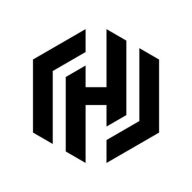


Red Hat Ansible Automation Platform and HashiCorp Terraform compete in infrastructure automation. Ansible is favored for its ease of setup and agentless architecture, while Terraform holds an advantage in multi-cloud deployments thanks to its infrastructure-as-code approach and modular framework.
Features: Ansible is easy to use with a simple YAML-based configuration language, supported by a robust community and documentation. Terraform excels with infrastructure-as-code capabilities, modular framework, and support for complex cloud architectures across multi-cloud environments.
Room for Improvement: Ansible experiences performance issues at scale due to SSH connections and could improve in GUI usability and documentation. Terraform could enhance script management and error logging, and its use of open-source plugins may pose security risks.
Ease of Deployment and Customer Service: Ansible is flexible for on-premises, private, and public clouds with strong community support, minimizing the need for external assistance. Terraform also offers flexibility across cloud environments with comprehensive documentation and active community support, which aids in seamless deployment.
Pricing and ROI: Ansible offers a free version but charges for enterprise features like Ansible Tower, which adds capabilities such as role-based access control. Terraform is open-source, with concerns about the cost of Terraform Cloud for larger deployments. Both provide a clear ROI by reducing infrastructure management time and resources, choice depending on enterprise needs and budgets.
Everything we've gained from it makes my job easier day after day, and I see value in it as an engineer.
Microsoft Intune not only saves costs by reducing the number of personnel needed but also offers a comprehensive solution for managing laptops, applications, security, individual access, and enrollment.
Importantly, when someone leaves the company, it helps protect document access on their devices.
When a support ticket is submitted, it directly reaches someone with Intune support expertise.
When I contacted Microsoft, they had the same expertise, if not more, which is phenomenal because I felt heard and my problem was solved.
Sometimes, the support provided is excellent, and the representative is knowledgeable, while other times, the service needs improvement.
I would rate the HashiCorp technical support an eight on a scale of one to ten, where ten is the best.
They provide mail IDs, a portal, and contact numbers for assistance.
The Ansible sales and technical support services need significant improvement.
I have not escalated any questions to the Red Hat support team regarding Red Hat Ansible Automation Platform, as their modules are professional and complete.
The scalability of Microsoft Intune is ten out of ten.
Ideally, we want to automatically segregate devices based on user properties like primary use, but currently, dynamic groups seem limited to device properties.
It supports organizations with 200 endpoints and those with more than 15,000 endpoints.
Terraform runs when changes occur.
Scalability is effective, and I would rate it a ten out of ten.
HashiCorp Terraform's scalability is straightforward because we can utilize a variable called count to scale our resources easily.
Ansible can face scalability issues, such as limitations when trying to scale up infrastructure.
We have not experienced downtime, bugs, or glitches.
It appears Microsoft Intune undergoes changes without informing customers.
Microsoft Intune has been very stable.
I can choose a stable version and decide whether to upgrade based on its performance.
HashiCorp Terraform is extremely stable.
Stability has been a concern, particularly around backside stability with unexpected terminations.
The stability of Red Hat Ansible Automation Platform is excellent, deserving a 10 out of 10 rating.
Features like unlocking devices sometimes fail, and the support offered for other operating systems is insufficient.
There are communication issues, so you might start working with a feature without knowing if it will be deprecated six months from now.
Many third-party companies offer single-pane-of-glass reporting that shows you what your update environment looks like, how your patch is doing, application status, etc., but Intune's reporting is not intuitive.
HashiCorp Terraform should implement better security measures to keep sensitive information hidden from unauthorized users.
There are potential improvements in the backend stability of HashiCorp Terraform.
How quickly can it be integrated into my Terraform scripts ensuring rapid availability of resources is crucial.
The dashboarding capabilities should be improved by bringing CMP (Cloud Management Platform) into Red Hat Ansible Automation Platform.
Red Hat Ansible Automation Platform could improve by creating modules for upcoming AI and ML tech stacks.
More library support for microservices architecture and Kubernetes would be helpful.
Introductory professional services, like a fast-track service, were included with our E5 membership, and there have been no additional costs.
The Intune suite and add-ons, such as batch management and remote help, are costly.
It costs approximately forty euros per user per month.
I use the open-source version of Terraform, so there is no cost for me.
The pricing is high, and since I'm not using all functionalities, it would be better if the price depended on the functionalities used.
The cost of combining Red Hat Developer Hub and Ansible is extremely high, which presents a significant challenge with the Red Hat product.
It is free and open-source for testing or small labs.
Intune excels in configuration and compliance management for Windows 10, ensuring devices receive timely updates and adhere to organizational standards.
Dynamic groups allow us to set conditions for automatic membership, eliminating the need for user intervention or manual review and ensuring a seamless workflow.
Windows Autopatch is the most valuable because it removes the burden of patch management.
Terraform modules make it easier to manage complex infrastructure and code within an organization.
Terraform's infrastructure as a code tool facilitates deploying code on tools, and once configured with AWS and local Terraform systems, it can be reused multiple times without much issue.
If changes are needed, I track who did what because my Terraform scripts are version-controlled.
The agentless architecture of Red Hat Ansible Automation Platform, using the SSH key, makes it passwordless and allows us to push configurations with one click, creating a major advantage.
The automation capabilities streamline deployment processes, providing reliability and reducing manual intervention and errors.
It makes it simple to develop Ansible playbooks and roles, which aids in simplifying my daily administrative tasks.
| Product | Market Share (%) |
|---|---|
| Red Hat Ansible Automation Platform | 16.0% |
| Microsoft Intune | 9.4% |
| HashiCorp Terraform | 3.9% |
| Other | 70.7% |



| Company Size | Count |
|---|---|
| Small Business | 116 |
| Midsize Enterprise | 46 |
| Large Enterprise | 152 |
| Company Size | Count |
|---|---|
| Small Business | 25 |
| Midsize Enterprise | 7 |
| Large Enterprise | 23 |
| Company Size | Count |
|---|---|
| Small Business | 24 |
| Midsize Enterprise | 8 |
| Large Enterprise | 48 |
Microsoft Intune provides centralized management of mobile devices and applications, ensuring security, compliance, and productivity through integration with Microsoft services like Microsoft 365 and Azure Active Directory.
Organizations use Intune for managing mobile devices and applications, enhancing security and compliance across platforms. With features like single sign-on, conditional access, and zero-touch deployment via Autopilot, it facilitates efficient operations. Intune's scalability, easy enrollment, and capabilities such as remote wipe support diverse device management, offering robust data protection and efficient operation. Despite its features, improvement areas include reporting, compatibility with non-Microsoft devices, and better support for macOS and Linux devices.
What are the key features of Microsoft Intune?
What benefits should users look for in reviews?
In industries such as finance, healthcare, and education, Microsoft Intune is implemented to ensure secure and compliant device management. Companies leverage its capabilities to deploy security policies and manage both corporate-owned and BYOD environments, facilitating a unified approach to data protection and compliance.
HashiCorp Terraform is a powerful configuration management solution that aims to provide users with the ability to maximize the ease with which users can perform their configuration management operations. It makes it so that organizations can reliably configure and manage their infrastructure. Terraform is a tool that transforms every user into an administrator and project collaborator. Businesses that use it have at their command a solution that they can use for the entire lifecycle of their infrastructure.
HashiCorp Terraform Benefits
Some of the ways that organizations can benefit by choosing to deploy HashiCorp Terraform include:
HashiCorp Terraform Features
Reviews from Real Users
HashiCorp Terraform is a highly effective solution that stands out when compared to many of its competitors. Two significant advantages it offers are its ability to help users create deployment pipelines that make the deployment process simple and its ability to recover infrastructure fully should something delete or damage it.
Patryk G., the chief technology officer at Translucent Computing Inc, writes, “Furthermore, Terraform enables the creation of a deployment pipeline using tools, such as Atlantis, which automates the process of scanning and deploying the code. This streamlines the deployment process and adds features, such as auditing, risk management, and security scanning to the deployment process. Terraform provides a more organized and secure way of managing infrastructure, compared to the traditional ad-hoc method.”
Rakib M., the chief technology and strategy officer at the White House, says, “One of the other major features of terraform is its ability to act as a Disaster Recovery tool. Since terraform is an Infrastructure-As-A-Service tool, it can be used as part of the rest of the DR toolset to restore affected infrastructure to its original state without any variation.”
Red Hat Ansible Automation Platform streamlines IT operations with features like a simplified GUI and extensive module support. Its agentless architecture and YAML ease make it an adaptable choice for managing diverse infrastructures efficiently.
Red Hat Ansible Automation Platform offers a robust automation framework that supports multiple environments and integrates well with various applications. Its agentless Python-based architecture facilitates efficient server management and rapid update deployment. Users benefit from centralized management through Ansible Tower, role-based access control, and dynamic inventory. However, improvement areas include documentation, API integration, network support, and UI scaling. Enhanced community contributions could address module availability and compatibility gaps.
What are the most important features of Red Hat Ansible Automation Platform?In industries like finance, healthcare, and technology, Red Hat Ansible Automation Platform is used for network management, security compliance, and configuration tasks. Organizations utilize its capabilities for cloud and on-premises deployment, infrastructure provisioning, and workflow orchestration. Many integrate it with tools such as Puppet or Terraform to enhance CI/CD processes, benefiting from its agentless design in adapting to cloud environments.
We monitor all Configuration Management reviews to prevent fraudulent reviews and keep review quality high. We do not post reviews by company employees or direct competitors. We validate each review for authenticity via cross-reference with LinkedIn, and personal follow-up with the reviewer when necessary.